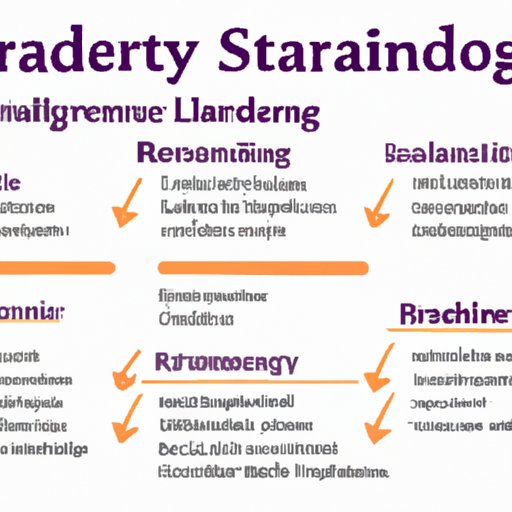Introduction
Strategic leadership is the ability to effectively lead an organization through a strategic vision. It involves having a clear understanding of the organization’s purpose and goals, as well as the ability to create and implement plans to achieve those goals. Strategic leaders have the capacity to motivate and inspire others, while also being able to recognize and respond to changing environments.
Definition of Strategic Leadership
According to the Harvard Business Review, strategic leadership is “the ability to anticipate, envision, maintain flexibility, and empower others to create strategic change as necessary.” A strategic leader has the capacity to think critically, identify opportunities, and develop innovative solutions that will help the organization reach its objectives. They are able to create an environment of collaboration and trust, and foster an atmosphere of respect and cooperation.
Overview of the Benefits of Strategic Leadership
Having a strategic leader in place can be beneficial for an organization in many ways. According to research from the University of Maryland, having a strategic leader can result in increased efficiency, productivity, employee engagement, and overall performance. Additionally, strategic leaders are able to create a culture of collaboration and inspire their teams to take ownership of their work.
Strategies for Effective Strategic Leadership
In order to be an effective strategic leader, there are certain strategies that must be implemented. These include:
Understanding the Organization’s Vision and Goals
It is important for strategic leaders to have an understanding of the organization’s vision and goals. This includes understanding the company’s mission, values, and strategies. By having a clear understanding of the organization’s goals, the leader can then develop strategies to achieve those goals.
Developing a Clear Communication Strategy
Strategic leaders must have a clear communication strategy in place. This includes developing a plan for how information will be shared within the organization, as well as with external stakeholders. Having a clear communication strategy will ensure that everyone within the organization is on the same page, and that any changes or updates are communicated quickly and efficiently.
Establishing a Culture of Collaboration
Effective strategic leaders understand the importance of collaboration. They create an environment where team members feel comfortable working together and sharing ideas. They also establish processes and protocols that encourage collaboration, such as regular meetings and feedback sessions.
Encouraging Diverse Perspectives
Strategic leaders understand the value of diverse perspectives. They recognize that different people bring different skills and experiences to the table, and they create an environment that encourages different points of view. This helps to ensure that all voices are heard and that the best possible decisions are made.
The Role of a Strategic Leader in Organizational Change
Organizational change is inevitable, and it is the role of the strategic leader to lead the way. The leader must be able to recognize when change is needed, and then create and implement a plan to make it happen. This includes:
Leading by Example
A strategic leader must be able to lead by example. They must demonstrate their commitment to the organization’s vision and goals, and show their willingness to make the necessary changes. This will help to build trust among their team members and motivate them to follow their lead.
Understanding Resistance to Change
Change can be difficult for some people, and it is important for strategic leaders to understand and address any resistance to change. They should be able to identify the underlying causes of resistance, and then develop strategies to address those concerns. This could include offering training, providing support, or creating incentives to encourage change.
Building Trust and Aligning Goals
When implementing change, it is essential for strategic leaders to build trust and align goals. This includes communicating openly and honestly with team members, listening to their feedback, and addressing any concerns they may have. By doing this, the leader can ensure that everyone is on board with the changes and that they are working towards the same goals.

Developing an Effective Strategic Leadership Plan
Once the organization’s vision and goals have been established, the next step is to develop an effective strategic leadership plan. This includes:
Identifying Necessary Resources
The first step in creating an effective plan is to identify the necessary resources. This includes identifying the people, tools, and technologies that will be needed to achieve the organization’s goals. The leader must be able to assess the current resources and determine what additional resources may be needed.
Assessing Risks and Planning for Success
It is important for strategic leaders to assess any potential risks associated with the plan and to create strategies to mitigate those risks. This includes conducting a thorough risk assessment and creating contingency plans to ensure that the organization is prepared for any potential issues.
Creating an Action Plan
Once the resources have been identified and the risks assessed, the leader can then create an action plan. This includes outlining the steps that need to be taken to achieve the organization’s goals, as well as timelines and milestones. The plan should also include methods for monitoring progress and making adjustments as needed.
Examining the Impact of Strategic Leadership on Teams and Organizations
Having an effective strategic leader in place can have a positive impact on teams and organizations. This includes:
Enhancing Efficiency and Productivity
Strategic leaders are able to identify areas where the organization can become more efficient and productive. They can also create systems and processes that help streamline operations and improve overall performance.
Increasing Employee Engagement and Morale
Strategic leaders understand the importance of employee engagement and morale. They create an environment where employees feel valued and appreciated, and they provide the tools and resources needed to help them do their jobs effectively. This can lead to increased engagement and higher morale.
Improving Overall Performance
By creating an environment of collaboration and trust, strategic leaders are able to improve overall performance. This includes helping the organization reach its goals, as well as increasing profitability and customer satisfaction.

Case Studies of Successful Strategic Leaders
There are numerous examples of successful strategic leaders. Examining these case studies can provide valuable insight into the strategies and tactics used by successful leaders. Some of these case studies include:
Examining the Successes of Various Leaders
There are numerous examples of successful strategic leaders, including Apple CEO Tim Cook, Microsoft CEO Satya Nadella, and Amazon CEO Jeff Bezos. Examining the successes of these leaders can provide valuable insight into the strategies and tactics used by successful leaders.
Analyzing How Their Strategies Contributed to Their Success
It is also important to analyze how the strategies used by these successful leaders contributed to their success. For example, Cook was able to create a culture of innovation at Apple that allowed the company to remain competitive in an ever-changing market. Nadella was able to successfully transition Microsoft from a software company to a cloud-based business, and Bezos was able to develop a customer-centric approach that enabled Amazon to become one of the most successful companies in the world.
Conclusion
Having a strategic leader in place can be beneficial for an organization in many ways. Strategic leaders are able to create an environment of collaboration and trust, foster an atmosphere of respect and cooperation, and inspire their teams to take ownership of their work. They are also able to identify opportunities, develop innovative solutions, and create an action plan to achieve the organization’s goals. By examining the successes of various leaders, it is possible to gain valuable insight into the strategies and tactics used by successful strategic leaders.

Summary of the Benefits of Strategic Leadership
Strategic leadership can have a positive impact on teams and organizations, resulting in increased efficiency, productivity, employee engagement, and overall performance. It can also create an environment of collaboration and trust, and foster an atmosphere of respect and cooperation.

Final Thoughts on the Importance of Strategic Leadership
Strategic leadership is essential for any organization that wants to succeed. Having a strategic leader in place can help to ensure that the organization is reaching its goals and taking advantage of opportunities. It is important for organizations to invest in strategic leadership, as it can have a positive impact on the organization’s overall performance.
(Note: Is this article not meeting your expectations? Do you have knowledge or insights to share? Unlock new opportunities and expand your reach by joining our authors team. Click Registration to join us and share your expertise with our readers.)
